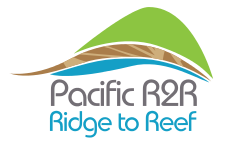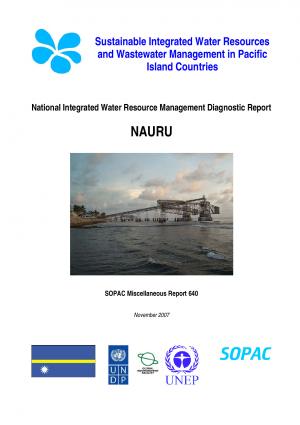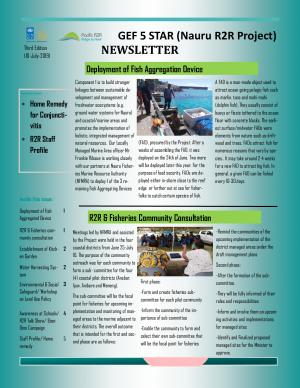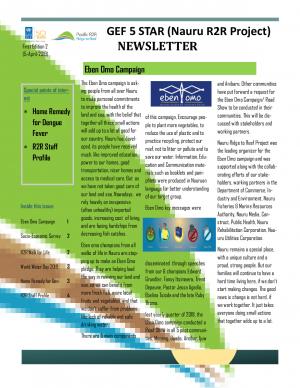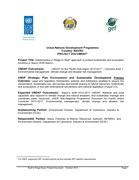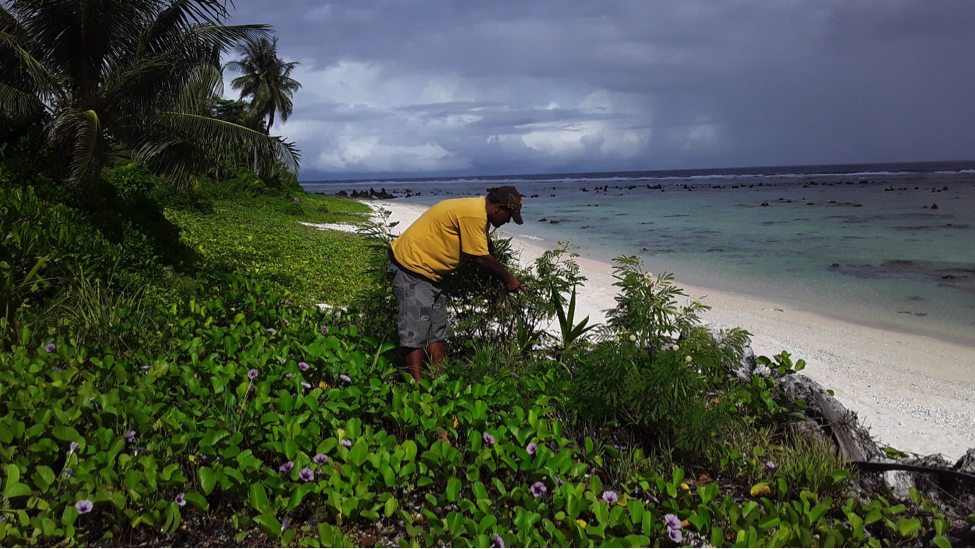
Project Overview
Nauru is the world’s smallest independent republic consisting of one 21km2 island. It is an isolated uplifted limestone island located just south of the equator, surrounded by a fringing coral reef some 120 to 300 meters wide. A narrow coastal plain surrounds a raised coral limestone plateau of pinnacles and outcrops, the latter 70% and 30% of the island land area respectively.
The limestone plateau has been the focus of extensive phosphate mining for the past 80 years which is in the process of being phased out. Other than phosphate few other economic resources exist and investments of phosphate income have been exhausted leaving the government near bankruptcy.
The freshwater resources of Nauru are contained in Buanda lagoon, a landlocked, slightly brackish freshwater lake located in the southwest of the island on the plateau. Groundwater from the underlying lens is considered extensive, with the result that it has been tapped by several hundred household wells to supplement the main source of potable water supply from desalination.
Beneath the upper layer the water becomes increasingly brackish with depth until it meets salt water at 80 m below sea level. Replenishment or recharge of the freshwater lens is dependent on rainfall. A first approximation of the average groundwater recharge for Nauru is 800 mm per year A plant commissioned by the government from the National
Phosphate Commission (NPC) provides desalinated water using waste heat generated from its power station. Water is delivered by truck to individual households and commercial storage tanks. When the plant is not in operation due to maintenance or breakdown, the island faces severe water shortages and an increased reliance on the groundwater sources for supply.
The drought from 1998 to 2001 stretched the water resources on the island and highlighted the urgent need for a sustainable water supply system. The drought resulted in overuse of the lens and a decline in water quality, leading to rising health and environmental issues due to seepage from household sewage pits into the increasingly brackish and contaminated groundwater.
There is no wastewater treatment plant in Nauru and all the sewage and wastewater are either discharged to the sea or disposed at home. Home sanitation disposal facilities are mostly cesspit, allowing the wastewater to infiltrate the porous ground and further the groundwater. Nauru’s access to improved sanitation facilities represents 50% of the
population. However, sanitation facilities considered at low risk to the environment are probably significantly less than that. Nauru has one of the highest levels of diarrhoea in the world and yet there are no water quality standards (or guidelines) and very little monitoring of domestic water networks at the household level.
Through consultative Hot Spot analysis stakeholders on Nauru identified water scarcity and institutional arrangements; effects of sanitation practices on water resources; and conservation and environmental issues as the key water resource management issues. The above issues have begun to be addressed through the cross-sectoral planning and management initiatives of the GEF Pacific IWRM Project. Needs still exist and have been identified within a Ridge to Reef context.
These include building on successful waste management systems approaches that were demonstrated in the IWRM Project to safeguard groundwater and lagoon water quality; identifying critical fisheries habitats and threats, local initiatives and strategic partnerships to improve coastal and fisheries management and; building coastal resilience to potential climate change.
Project Components:
|
Project Contacts

IW R2R Project Manager
[email protected]
Resources
| File(s) | |
|---|---|

|
Nauru |
| File(s) | |
|---|---|
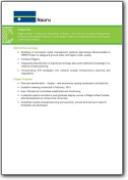
|
Project Progress Nauru |
